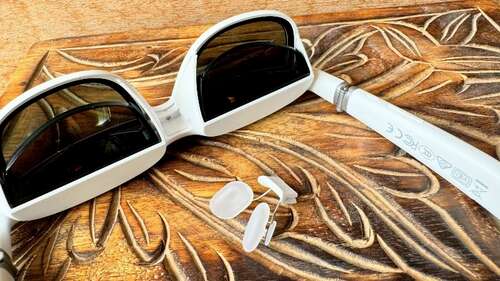Viture One Lite comes with micro OLED panels that offer a resolution of 1920 x 1080 pixels per eye, with a 43-degree field of view (FoV) and density of 55 pixels per degree (PPD). The contrast ratio stands at an acceptable 50,000:1 and you also get seven levels of on-device brightness adjustment. Talking about brightness, the micro OLED units on the Viture One Lite max out at 1,800 nits, thrice that of the Xreal Air 2 and the RayNeo Air 2.
That high brightness figure really helps elevate the video watching experience. Colors look punchy with ample amount of contrast, though the refresh rate is capped at 60Hz. With the brightness maxed out, the virtual display on the Viture One Lite was completely opaque, even though I had a 42-inch monitor right in front of my eyes with its own brightness set to around 60% mark. At no point did I feel the need to slap the sunshade to block light coming through the lenses.
However, if you are sitting outside under bright light, you mighty want put it on to avoid ambient light coming in from the sides. Otherwise, if you’re getting work done on just one large virtual window, you won’t feel the need for the lens cover. Yes, there is a certain degree of edge fuzziness happening here, but the magnitude is significantly lower compared to rivals and there is no vignetting to be seen, either. However, there is still a bit of shimmer effect happening due to head movement, and I had to lock screen movement alongside the Y-axis to tame it. Otherwise, for watching movies or working across three monitors, the Viture One Lite, with its current price tag, pretty much ensures you won’t be left feeling like you’re missing out on much.


